Did you know that carrots weren’t always orange?
In fact, the current culinary craze for purple carrots is simply going back to roots (pardon the pun), because it was only in the 17th Century, in a tribute to William of Orange, that Dutch growers apparently developed the orange carrot, and the color has since become synonymous with carrots worldwide.
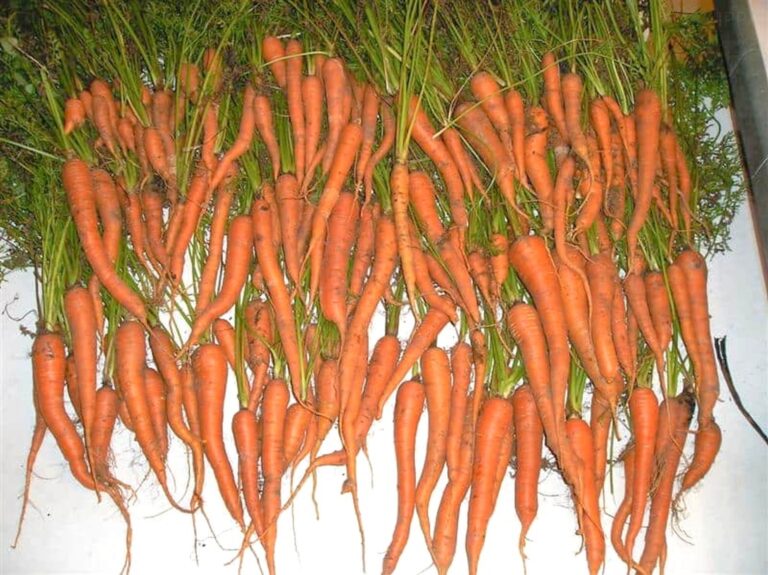
Before that carrots (Daucus carota), considered to have originated in Persia and Europe, came in quite a variety of shades – red, yellow, purple, almost black, and white.
Top chefs and homesteaders are embracing the new color spectrum for two reasons – the chefs to provide unique looking dishes and plates that appeal, and homesteaders and survivalists in a bid to get back to heirloom vegetables that are non-GMO, authentic and robust.
Carrots supply carbs, sugar and fiber as well as various vitamins and minerals, including beta carotene, and rank among the top 10 high calorie vegetables that can be grown in most parts of the US.
Apparently, though, the ‘fact’ that they improve night vision is partially a myth, part of World War II British propaganda in a bid to scare the enemy. They do help, but not as much as previously thought.
Table of Contents
Carrots Varieties
If you want some variety in your pack of seeds try the Colorful Carrot Blend from Seeds of Change with a mix of colors making pulling carrots quite exciting – which ones will be pink, yellow, purple, white or orange?
The seed is organic and non-GMO, as is the Napoli Carrot which will give you the bright orange you have become used to, especially for carrot salad, and baking in carrot cakes.
For a little difference the Dragon Carrot has a reddish purple exterior with yellow orange flesh inside which is especially good eaten fresh, but quite mild when cooked.
Again this seed is organic and non-GMO with a good germination rate.
What soil do carrots need?
Well-drained loose soil that has been doubly dug and given compost and manure will give carrots the chance to grow straight down instead of being misshapen as they struggle through hard soil.
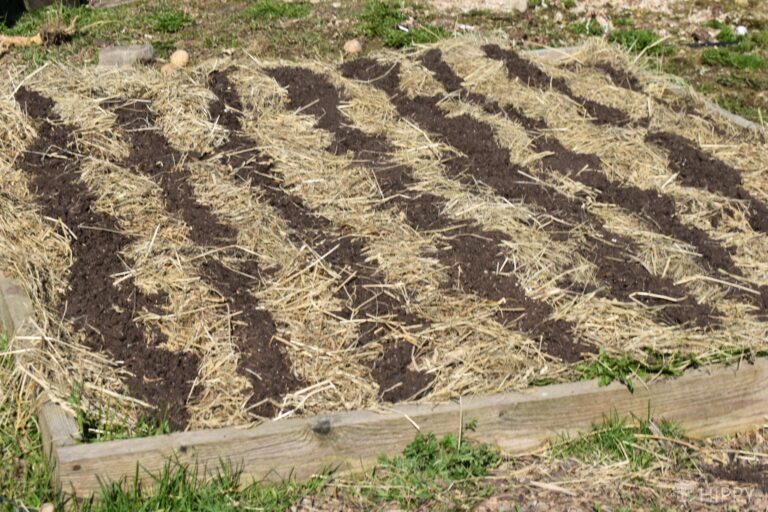
Planting in raised beds is a good idea too. Experts feel the best range for carrot growing is pH 6.0 to 6.8, but even if your soil is in the 5.5 to 7.5 range you’ll still be able to grow carrots that taste good. A handy little tool for testing is a reusable soil pH meter.
If the soil test results show your soil is too acidic you can add some lime, but if it too alkaline then the addition of compost and well composted manure should lower it over time instead of resorting to using aluminum sulfate, or to sulfur.
Natural is better, which is why preparation for planting should begin once the last season’s crops are finished, so microorganisms have a couple of months to get to work on integrating the composted material giving you friable soil for the new crop.
When to Plant
Carrots are a cool weather crop so you can plant the seed around two weeks before the last frost is expected.
They take 70 to 80 days to mature, so plant some every two weeks to ensure you always have fresh carrots to pull throughout the season. In USDA Zones 8 and warmer, plant your carrots only in fall and winter.
If you plant them in the summer they will tend to bolt sending their energy into flowering and producing seed rather than to the root, resulting in a disappointing yield, if any.
How to Plant in the Ground
Plant in rows with about 4 seeds every inch – the seeds are so tiny, it is quite hard to be accurate, and cover with ¼ to ½ inch of a compost and sand mix.
They will take between 7 to 21 days to germinate depending on the warmth of the soil – the warmer it is the faster they will germinate.
Plant seeds in rows 12 inches apart to give the plants some room, as they will grow between 1 to 2 feet high.
Water with a very fine spray, not a hosepipe, or the seeds will be washed out of the soil. Keep soil moist using gentle sprays until the carrots push through the ground.
As the carrots grow, use some mulch to cover the tops near the crown so the carrot root doesn’t go green from too much sunlight. Because carrots have a taproot they do not transplant easily, so sow them where they are to grow.
Planting in Pots
If you want a really early start, or don’t have space for a vegetable garden, then grow them in pots that are at least 12 inches deep and 12 inches across, sowing a few seeds and thinning out later as required.
They can be kept indoors near a sunny window and the whole container moved outside when the weather warms up.
How many should I plant?
Plant 80 – 100 carrots for the season, staggering planting times so you always have some fresh to pull. Remember carrot cake is a popular dessert, so you’ll need to have some for baking!
Watering
Keep soil moist during the growing season but not waterlogged otherwise the carrots can be susceptible to various diseases.
Diseases and Pests
Carrot root flies can be a problem in early spring – they are green with red eyes whose females lay their eggs at the crown of the carrot so the larvae can burrow in and eat the tender root.
Perhaps delay planting if you are in the Northwest where these pesky flies are prevalent. There are a number of ways to prevent their attention – one is to sow seed quite thinly so the smell of carrot plants being thinned out does not attract them.
The other is row covers, or mixed plantings with members of the onion family – leeks, shallots, garlic and green onions, to mask the smell of the carrots, or mixed plantings with other vegetables making it harder for the flies to find.
Aster Yellows Disease is a phytoplasm carried by the aster leafhopper – somewhat similar to the way the anopheles mosquito carries malaria.
The phytoplasm causes the leaves to go yellow, carrots to be stunted with fibrous side roots making them look unattractive, and instead of being long and pliant the leaves tend to be stubby and bushy.
To get around this problem you may have to use crop covers. They are light and can tear easily but if you work with them carefully they will last more than one season and will protect your plants allowing the sun and rain in, but not the insects.
This crop cover has had positive reviews, compared to some crop covers that literally disintegrate, leaving gardeners very frustrated.
Using smooth PVC pipes filled with sand to hold down the edges of the crop will help avoid wind damage.
Leaf Spot by Cercospora carotae causes dark circular spots to appear on the leaves with a yellow edging and can be spread by water, wind, and machinery that has not be properly cleaned from prior use. It usually occurs in humid moist weather.
It is best to avoid planting in warm weather. Control using fungicide if you must but there are drawbacks in that the disease becomes resistant to fungicides over time and to be effective the spraying needs to take place at the first sign of the disease.
Common Scab (Streptomycies scabies) can be problem if you have dryish alkaline soil with a pH above 7. You will need to lower the alkalinity of your soil by adding lots or organic matter containing compost and composted manure.
This is the slow way – it is faster to add aluminum sulfate or sulfur to lower the pH, but you will need to read the instructions on the package label carefully before doing so to ensure you do not overdo it and damage your soil.
Black Root Rot (Thielaviopsis basicola) occurs when the land is not well drained, resulting in black areas on the roots, so soil preparation and good drainage are key to a good crop.
Leaf blight (Alternaria danci) can cause white and yellow spots to appear on the leaves, later turning brown and watery. This tends to occur during wet humid weather.
Plant disease resistant cultivars from your seedsman, make sure no residue remains from previous crops to spread the infection and rotate crops regularly – after planting carrots put in legumes as nitrogen fixers.
Black rot is caused by the fungus Alternaria radicinia that can unfortunately be present in the seed and in crop residue from previous planting and can take 8 years to get rid of.
It tends to strike in warmer weather, and when leaves are subject to a lot of moisture and are spread via wind and water.
To avoid the problem plant in cooler weather, destroy all crop residues, avoid growing in times of high rainfall and humidity and rotate crops as well as buying certified disease free seed.
Nematodes are microscopic wormlike creatures that make raised knots on the root, stunting growth.
Introduce plenty of compost, which has its own microorganisms to keep these pests under control. Rotate crops regularly if you have a nematode problem.
Yield
One carrot per plant – you need to work out how much your family loves carrots before deciding on the number to plant. Plant 80 – 100 carrots for a family of four.
Extras can be preserved or frozen for adding to winter dishes. In the spring and summer you’ll want them grated and fresh in your salads. Stagger planting times so you always have fresh carrots.
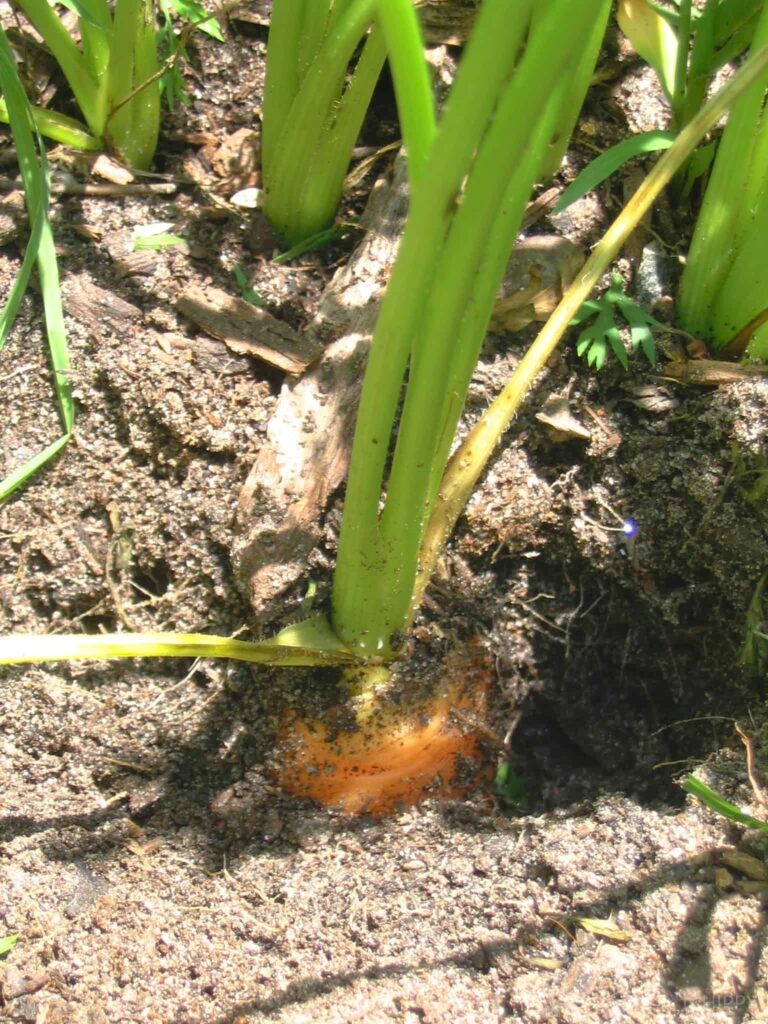
Can you regrow carrots from the tops?
Once you have harvested your carrots it’s tempting to cut off the tops with a little of the orange part and replant. They will continue to grow if placed in sandy soil that is a 50/50 mix of soil and compost and kept moist.
However, it is only the tops that will grow – once the taproot is gone it is over – no more new carrots. Instead the new plant may even flower and try to set seed.
It’s a good project with kids to put the carrot top on a pie plate with some moist newspaper, or suspended just touching the water on tiny pebbles or marbles, so they can see the soft leaves sprouting – but it’s not going to increase your harvest!
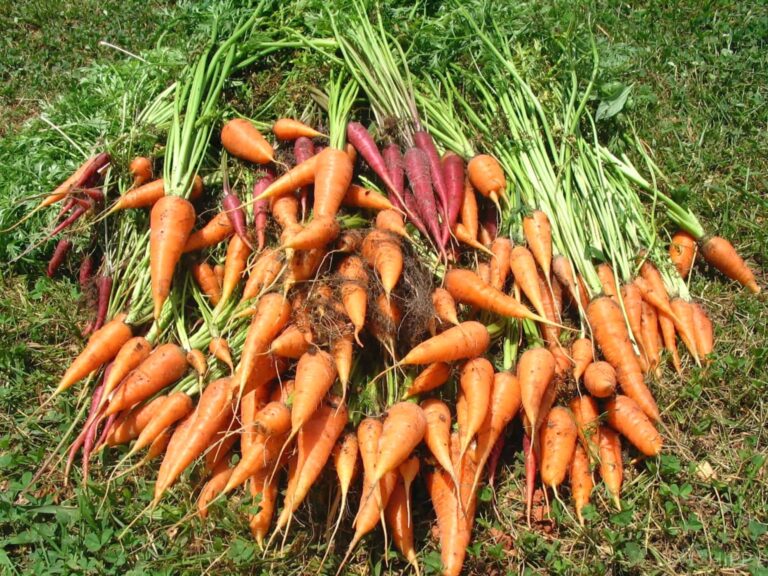
Harvesting
After two months, just move the soil away with your fingers a little round the tops of the carrots so you can see how big they are before grasping firmly near the crown and tugging out of the ground.
If you ground is nice and soft this is easy, if the soil is a little harder you may need to help of a small trowel to loosen the soil around the carrot.
Carrots that aren’t large enough for pulling can be left in the soil for a couple of weeks until they have grown to size. They will fill out once the competition for space and nutrients from the larger carrots you have harvested is removed.
Storing Carrots
If left out of the refrigerator carrots tend to go limp so get crisp young freshly pulled carrots washed and place into a dish with cool water and keep in the fridge for a few days until ready to use.
Otherwise, store unwashed carrots in a bag in the fridge – washing them tends to make them go slimy in the bag – so rather store dry and wash before using.
For freezing chop carrots into coins, julienne strips, or peel whole baby carrots and blanch in boiling water for two minutes then pack into containers and freeze.
To store in a root cellar, twist off tops and store in peat or dry sand in cold areas. The other option is canning or preserving your carrots in various ways – at the end of this article we give you some recipes.
Harvesting Seeds
Since carrots are biennials, they usually set seed in the second year. In warm areas, let the plant grow naturally, and in winter when the plant dies down give it some mulch and allow to rest.
When spring comes it will regenerate and send up flower stalks which when the flowers are dry can be cut off and stored in a cool dry area for around two weeks until you are ready to shake the umbels of the flower head and get the seed.
Seed companies remove the little beard attached to the seed but you needn’t do this for home use.
Make sure the seeds are dried out well and store in an airtight container with a little sachet of silica gel to ensure they remain dry until you are ready to plant the next year.
The longer you keep the seed the less viable it is, so plant what you have and store again for the next year.
If the winters are very cold where you live, any carrots left in the ground will freeze and not grow the next year.
So take the carrots stored in the root cellars and plant in the spring. They will grow and seed and you can then complete harvesting of seed as for carrots that overwinter in the ground
10 Amazing Carrot Recipes You Have to Try
- Honey garlic butter roasted carrots
- Delicious roasted carrot, rocket, and lentil salad
- Blackberry sauce venison and roasted carrots with star anise
- Vegetable pickle with carrots
- Carrot and Zucchini fritters
- Delicious and healthy zucchini carrot oat muffins
- The best carrot cake ever
- Chicken roasted with carrots for extra flavor
- Roasted carrot hummus
- A taste of India in this Gujarati carrot and peanut salad
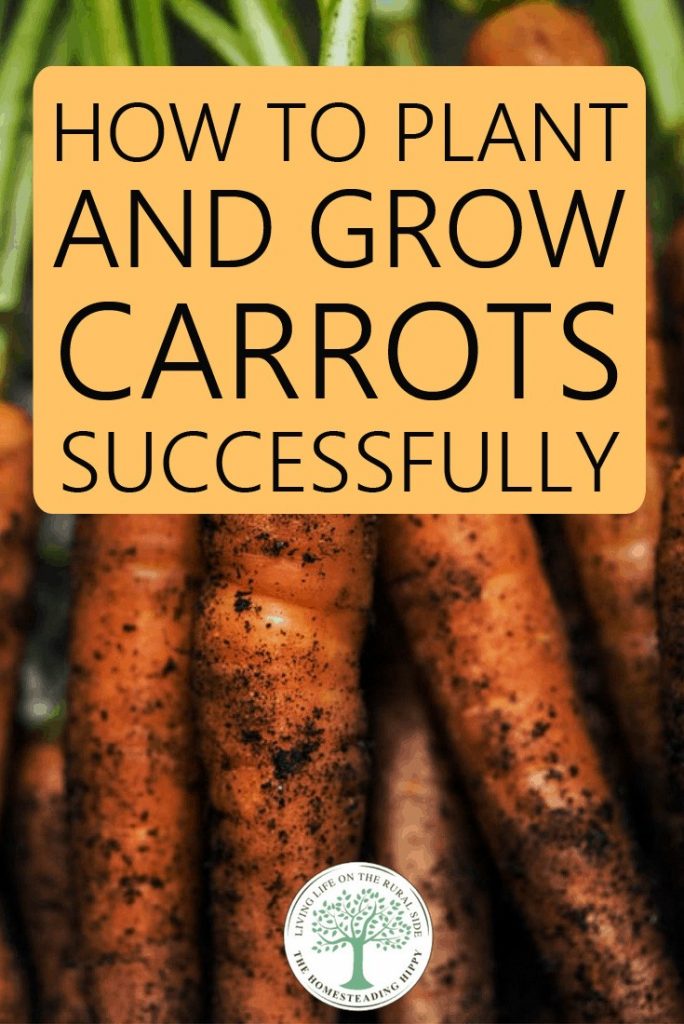

As a child I wanted to grow up and marry a farmer… simply because it was so different from my life right on the shores of the ocean. Well, I didn’t marry a farmer but a surfer instead. The urge, however, to grow stuff and make great food for a big family never left. We are on acreage with a sea view and easy access to fresh caught crayfish and other seafood – the best of both worlds. As an artist and writer I enjoy creating new recipes, tweaking traditional ones, and sharing the results not only with family and friends, but online. Mee the rest of the team at this page.

I wish I would have seen this a month ago. Just starting to see them sprout! Thanks any way!!! At least future reference.
I live in the south, zone 8b. can I start carrots in the early fall and get a fall-winter crop.
thanks in advance for any advise.